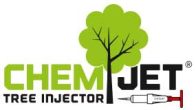Research
Chemjet Tree Injectors
Innovative Plant Protection Systems
Treatment of urban trees by means of stem application
The application of chemical plant protection in urban spaces involves difficulties and risks. It can be assumed that the plant protective agents employed are emitted into neighbouring areas, especially when controlling pests in the tops of avenue trees. Due to drift or drip down, these substances can endanger not only the traffic but also the health of passers-by and residents. The application of suitable agents by means of stem application could minimise or prevent such emissions and could primarily be used experimentally in situations where trees would otherwise have to be felled.
Dr. Andreas Düker
Institute for AgroEcology (IfA)
Phosphonate controls sudden oak death pathogen for up to 2 years
Since its emergence in the late 1990s, sudden oak death has killed mature oak trees and tanoaks in 14 California counties. Treatment options are now available to safeguard these trees from infection by Phytophthora ramorum, the aggressive and exotic pathogen responsible for sudden oak death. We provide an update on current knowledge regarding this emergent disease in California, and present results from three controlled experiments of two chemical treatments to manage the disease in oaks and tanoaks. Phosphonate treatments, legally registered in California to control sudden oak death, were effective in slowing both infection and growth rates for at least 18 months. Conversely, an alternative method consisting of an azomite soil amendment and bark lime wash was always ineffective, and did not reduce either growth or infection rates.
Matteo Garbelotto and Douglas J. Schmidt
UC Berkeley Paper
Why Trunk Injection
Plant protective fungicides, insecticides and nutrients applications has become an indispensable component of quality assurance in arboriculture, in which the control of insect pest, fungal and canker infections. CHEMJET® , micro-injection targets the problem directly within the tree itself. Control sanctions on chemicals, application methods of plant protection will become more severe in years to come. It is this new awareness for the environment, that will demand and dictate, the use of better chemicals and application methods in the treatment for trees.
Jim Rediker
jrediker@maverickbbs.com
www.oakwilt.com
Innovative Plant Protection Systems
Vine Protection by Means of Stem Application
The application of chemical plant protection in urban spaces involves difficulties and risks. It can be assumed that the plant protective agents employed are emitted into neighbouring areas, especially when controlling pests in the tops of avenue trees. Due to drift or drip down, these substances can endanger not only the traffic but also the health of passers-by and residents. The application of suitable agents by means of stem application could minimise or prevent such emissions and could primarily be used experimentally in situations where trees would otherwise have to be felled.
Dr. Andreas Düker
Institute for AgroEcology (IfA)
Timing of Phosphonate Trunk Injections for Phytophthora Root Rot Control in Avocado Trees
Abstract. Avocado trees, cv. Hass, were trunk-injected with 20% phosphonic acid, formulated as potassium phosphonate, at various stages of tree phenology and the dynamics of translocation to the roots studied. Phosphonate was detected in the leaves 24 h after trunk injection with the concentration peaking (60-80 mg/kg) within the first 10 days. However, the rate of accumulation and final concentration of phosphonate in the roots was dependent on the time of injection in relation to the sink/source status of the leafy shoots. Trunk injection at the beginning of the spring growth, when renewal shoots were strong sinks, resulted in phosphonate root concentrations of < 9 mg/kg which peaked at about 45 days after treatment. When phosphonate injections were given after the sink/source transition of the spring shoots, root concentrations increased to > 28 mg/kg at about 60 days after treatment. Injections of potassium phosphonate given during the period of summer shoot growth gave similar concentrations of phosphonate in the roots to the treatment given at spring shoot maturity.
Anthony W. Whiley, Jack B. Saranah, and Peter W. Langdon
Maroochy HRS, PO Box 5083, SCMC, Nambour, 04560, Australia
Philip A. Hargreaves, Ken G. Pegg, and Leslie J. Ruddle
Department of Primary Industries, Meiers Rd, Indooroopilly, 04068, Australia
Management of Sudden Oak Death (S.O.D)
On Saturday, November 7, Dr. Matteo Garbelotto, U.C. Berkeley professor and SOD researcher, reported the results of the May 2009 “SOD Blitz” and discussed management options for protecting oaks and slowing the spread of this highly aggressive plant disease. During the SOD Blitz, which was funded by grants from the U.S. Forest Service and hosted by the LAH Open Space Committee, LAH volunteers submitted over 250 California Bay leaf samples from all over Town for testing. Although only about 6% of the samples were positive for the SOD pathogen, the disease is present in many areas of Town and is expected to continue to spread. To view the SOD Blitz results see: www.matteolab.org
Recommendations from the 2009 LAH “SOD Blitz”
Managing Phytophthora Diseases
There are more than 60 described species of Phytophthora and all known species are plant pathogens. Each species can cause disease in from a few to over a 1000 different plant species. Hence, there are a few thousand diseases in a wide range of plants caused by the various species within the genus Phytophthora. Each of these diseases will have its own characteristics, which makes it difficult to generalise disease-control methods. However, it is important to understand the most common contributing factors that underpin the control of phytophthora diseases. Only an in-depth understanding of these underlying factors, coupled with a detailed understanding of the agronomics of the crop will allow one to develop effective, integrated disease control methods. The aim of this chapter is to provide an underlying basis for disease control by discussing a wide range of management practices available under the following headings: cultural practices, resistance breeding, biological control, fungicides, and phosphonates.
Diversity and Management of Phytophthora in Southeast Asia Edited by André Drenth and David I. Guest ACIAR Monograph 114 (printed version published in 2004)
